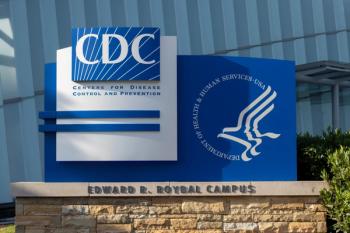
Mystery Monday: What Money Saving Measure Could Be Causing an Infant’s Seizures?
The mother of an 8-month-old infant, LG, arrives at the pharmacy to pick up her daughter’s seizure medicine, levetiracetam (Keppra) in 100 mg per ml oral solution, with 60 mg given to LG twice daily.
The mother of an 8-month-old infant, LG, arrives at the pharmacy to pick up her daughter’s seizure medicine, levetiracetam (Keppra) in 100 mg per ml oral solution, with 60 mg given to LG twice daily.
LG’s mother is also purchasing several cans of powder baby formula and distilled water that is specifically made for babies and mixing the formula. The mother says she’s stocking up due to the impending influenza (flu) season and the restrictions present during the coronavirus disease 2019 (COVID-19) pandemic. She is also purchasing chamomile teething tablets, simethicone colic liquid, and liquid acetaminophen for infants.
While the pharmacist rings up the products on the cash register, they ask LG’s mother if she has any questions regarding the medication. LG’s mother says her baby is fussy and has now developed seizures. With the impending flu season, the COVID-19 pandemic, and social isolation, she’s having a difficult time caring for the baby and making ends meet.
The pharmacist sympathizes with her and asks whether the physicians found anything that could be causing LG’s health problems. LG’s mother says that her daughter was born completely healthy, but now she has seizures, low sodium, and her growth is slowing. The physicians are still running tests to figure out what is going on.
LG’s mother asks whether any of the products she is purchasing today could be causing the health problems or potentially worsening them.
The pharmacist replies yes, and it’s a product people use more frequently when times are tough and money is tight.
Mystery: What money saving measure could be causing an infant’s seizures?
Solution: It’s the distilled water.
LG’s mother is watering down the baby formula to save money during the pandemic and that is causing LG’s low sodium, seizures, and weight loss.
Individuals who cannot communicate and do not feed themselves (infants and aphasic individuals on feeding tubes) are high risks for water and electrolyte imbalances. They cannot communicate their hunger and thirst, which normally is able to regulate electrolytes and hydration.
In order to assess these issues in such individuals, a simple blood test can be used. In the absence of medications and adrenal disease that can alter electrolytes, high sodium levels will demonstrate the individual is dehydrated, whereas low sodium levels will demonstrate overhydration. Both situations are dangerous and can manifest as seizures, muscle cramps, and cardiac arrhythmias.
REFERENCE
Centers for Disease Control and Prevention (CDC). Hyponatremic Seizures Among Infants Fed with Commercial. CDC website.
Newsletter
Stay informed on drug updates, treatment guidelines, and pharmacy practice trends—subscribe to Pharmacy Times for weekly clinical insights.




















































































































































































































